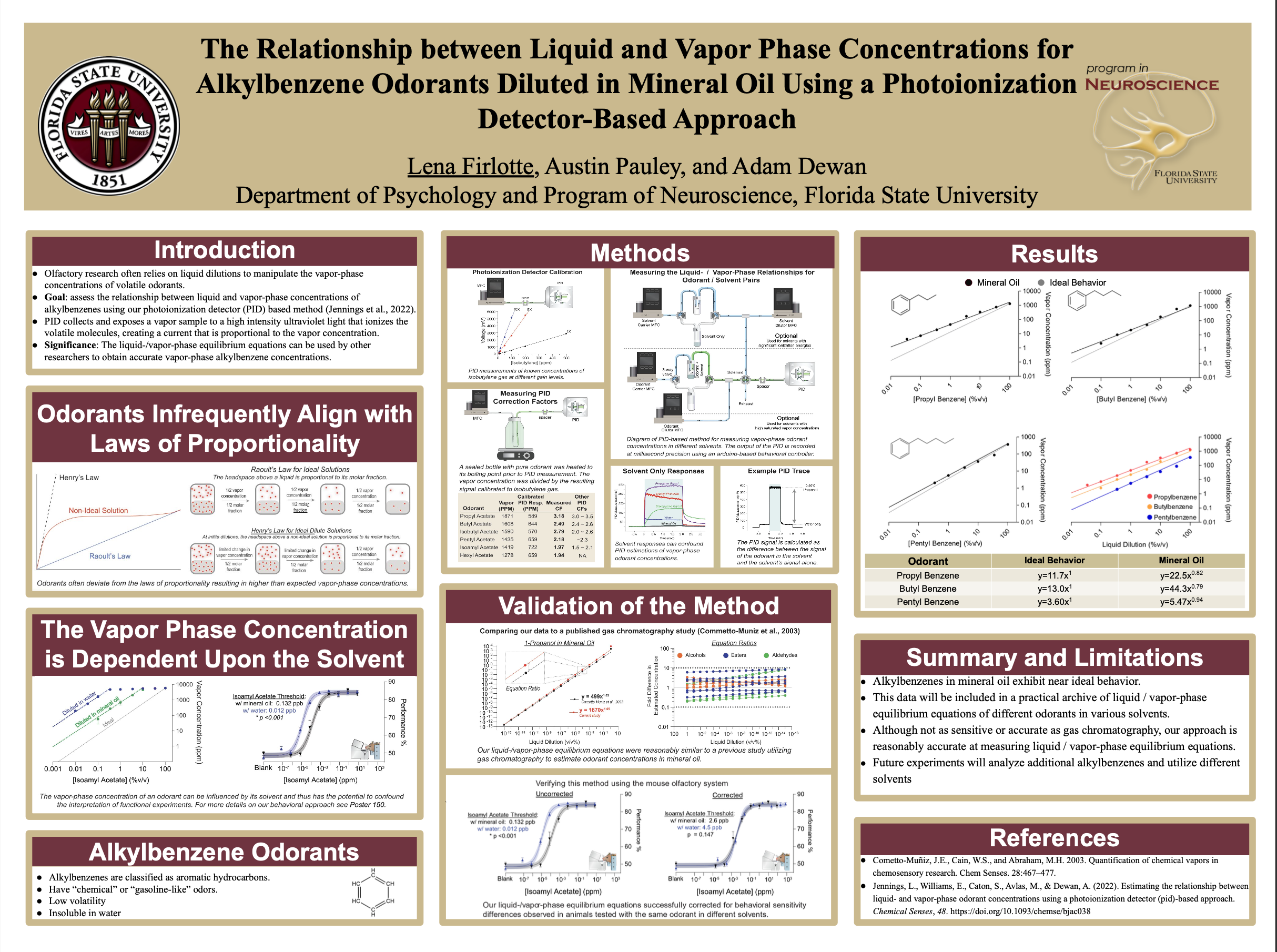Research Symposium
23rd annual Undergraduate Research Symposium, April 6, 2023
Lena Firlotte Poster Session 2: 1:30 pm - 2:30 pm/ Poster #342

BIO
I am a current Junior majoring in Cell and Molecular Neuroscience on the Pre-Medical track and aspire to become a Surgeon. Currently, I am a DIS student in Dr. Adam Dewan's Olfaction Lab which focuses on the molecular and cellular basics of sensory perceptions. My other research interests include Alzheimers Disease, Glioblastoma Clinical Trials and Basal Cell Carcinoma.
The Relationship between Liquid and Vapor Phase Concentrations for Alkylbenzene Odorants Diluted in Mineral Oil Using a Photoionization Detector-Based Approach
Authors: Lena Firlotte , Adam DewanStudent Major: Cell and Molecular Neuroscience
Mentor: Adam Dewan
Mentor's Department: Department of Psychology Mentor's College: Program of Neuroscience Co-Presenters:
Abstract
n-Alkylbenzenes or aromatic hydrocarbons are a class of volatile odorants that share a phenyl ring but differ in the length of their side carbon chain. These odorants have a “chemical” or “gasoline-like” odor and have been used in functional studies probing odor coding in the brain. These studies have relied on liquid dilutions in order to manipulate the vapor-phase concentrations of these volatile odorants. Unfortunately, the relationship between liquid dilution and vapor concentration is dependent upon the solvent and can significantly deviate from predictions based on ideal gas laws. In other words, a 10-fold liquid dilution rarely results in a 10-fold decrease in the number of molecules present in the vapor phase. Instead, the relationship between the liquid and vapor-phase must be empirically determined. The goal of this study was to assess the relationship between liquid and vapor-phase concentrations of alkylbenzenes using a photoionization detector (PID) based method. PIDs measure volatile substances by exposing them to high-intensity ultraviolet light resulting in ionization of the molecules. The ions produce a current that is proportional to the vapor phase concentration. The resultant data was fit with a power function, yielding liquid-/vapor-phase equilibrium equations that can be used by olfactory researchers to obtain more accurate depictions of the vapor-phase alkylbenzene concentrations used in their future experiments.
Keywords: Alkylbenzene, Photoionization, Odorants, Diluted,


